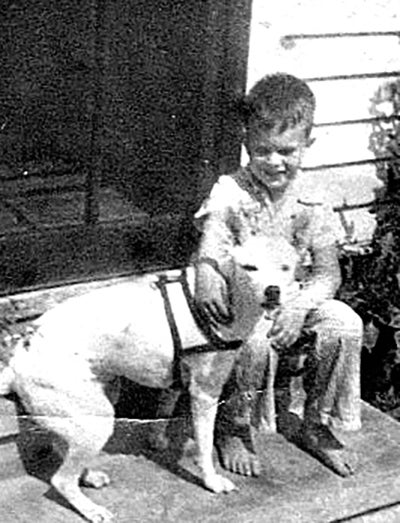And Now You Know: Orange’s counterfeiting sheriff, and the hanging tree
Published 12:23 am Saturday, April 25, 2020
|
Getting your Trinity Audio player ready...
|
Starting in 1856, events began in Orange that would lead to it becoming an armed camp and using a notorious “hanging tree.”
Fred Glover was elected sheriff in March 1856. Voters were unaware that Glover had a criminal past.
In 1844, he had been arrested for passing bogus banknotes at the Millard store in Beaumont.
In 1851, he had been arrested while carrying $200,000 in fake currency in his suitcase.
In 1853, the Nacogdoches Chronical reported that Glover and his uncle, John Moore, were “engaged in the manufacture of bogus money and passing it around the state.’
After Glover was elected sheriff, Moore joined him in Orange.
In May 1856, Sam Deputy was on his way home from Orange. Deputy lived on a shell bank seven or eight miles downriver from Orange. He was serving as a deputy sheriff under sheriff Glover.
Deputy was killed as he rowed his skiff to his home. His body was dumped in the river. Sam Ashworth and Jack Bunch were accused of the murder.
For three days, Glover led a posse in search of the murders, who were seen fleeing Orange. Each evening he returned with the warrant, “not found.”
At this time in Orange there were a group of 75 Regulators and 50 Moderators in Orange.
The Moderators were a self-proclaimed “faction of law and order”. They accused Glover of not searching diligently for the murders. Their belief was that the two murderers were probably members of the Regulators, headed by Moore and Glover.
The Regulators served more or less as “armed thugs” who supported the activities of Glover and Moore.
Orange had become an armed camp with bad blood between the two groups.
On June15, A.C. Merriman and 30 Moderators met in front of the courthouse after learning that three more murders had occurred, and the sheriff was taking no action.
On June 22, a group of Moderators rode north and captured Glover and Moore at a cabin Moore owned at the Narrows on the river.
Inside the cabin, they found counterfeit equipment and a box containing counterfeit money, “the Sabine bogus mint”.
Moore refused to open the box and was killed.
Glover refused to return to Orange as a prisoner and was also killed.
Men who were suspected as being part of the counterfeit ring were allowed to leave Orange County.
On April 8, 1869, Turner Ardasal was captured by neighbors while attempting to burn the bodies of Mrs. John Jett and her two children whom he had just murdered.
Ardasal was the first to be hanged from Orange’s “hanging tree” on Front Street.
On August 18, 1881, Sheriff George W. Michaels was shot in the arm and side with a load of buckshot. Martial law was declared. Four desperados were killed. Robert Saxon, Michaels’ assailant was arrested and hung from the “hanging tree.” Michaels recovered from his wounds.
In September 1885, Sheriff J.C. Fennel received a tip that a murderer named David Anderson was hiding out in the Orange railroad yards. When Fennel ordered Anderson to surrender, Anderson fired one bullet, killing Fennel. Anderson was captured and became the third person to “stretch hemp” from the “gibbet limb.”
A fourth person was hung in 1889.
In July 1892, Sheriff N. Burton decided that it was time for the infamous tree to no longer be used to defeat justice.
In a few days, Archie Washington was to be the first man legally executed. Washington had killed his wife with an axe.
Burton dispatched two of his deputies to saw down the tree and chop it up for use a firewood in the courthouse stoves.
The period of vigilante justice and the use of “Judge Lynch” in Orange had ended.
“And now you know.”




